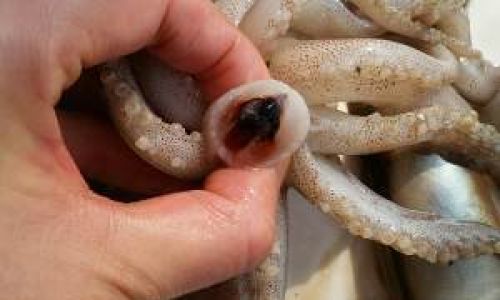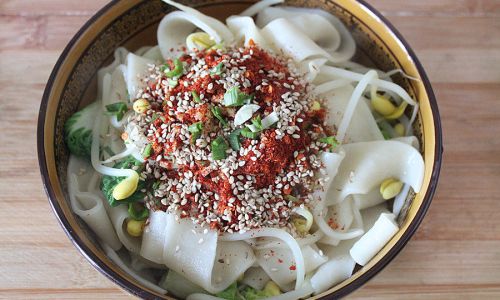Introduction
In the vast realm of seafood, fresh squid stands out as a versatile and flavorful ingredient that can elevate any dish from mundane to extraordinary. Its tender texture and mild, slightly sweet taste make it an ideal candidate for a wide array of cooking methods, from grilling and frying to stir-frying and steaming. Whether you’re a seasoned chef or an enthusiastic home cook, mastering the art of preparing fresh squid can open up a world of culinary possibilities. This comprehensive guide will walk you through the basics of selecting, preparing, and cooking fresh squid, along with several tantalizing recipe ideas to inspire your next seafood adventure.
Selecting Fresh Squid

The first step in enjoying fresh squid is knowing how to select it properly. Here are some key pointers to ensure you’re getting the best quality:
-
Appearance: Fresh squid should have a firm, glossy skin with no discoloration or sliminess. The flesh inside should be pinkish-white and firm to the touch.
-
Smell: Fresh squid has a mild, slightly sweet oceanic aroma. Avoid any that smell fishy or ammonia-like, as this indicates spoilage.
-
Eyes: The eyes of fresh squid should be clear and not cloudy. This is a quick indicator of freshness.
-
Source: Whenever possible, buy squid from a reputable fishmonger or market that specializes in fresh seafood. Ask about the day of catch to ensure you’re getting the freshest possible product.
Preparing Fresh Squid
Once you’ve secured your fresh squid, it’s time to prepare it for cooking. Here’s a step-by-step guide to cleaning and cutting squid:
-
Rinse: Start by rinsing the whole squid under cold running water to remove any surface dirt or debris.
-
Remove the Head and Tentacles: Grasp the body of the squid firmly and gently pull the head and tentacles away from the body. The beak (a hard, pointed structure inside the head) should be removed. You can do this by cutting the head just below the eyes and squeezing the beak out from the opposite end.

-
Skin Removal: Peel off the outer skin of the squid body. This can be done easily by making a slit along one side of the body, then pulling the skin off in one piece.
-
Clean the Inside: Turn the squid body inside out and remove any internal organs or bones (the quill or pen). Rinse thoroughly under cold water to ensure all internal parts are removed.
-
Cutting: Depending on your recipe, you can cut the squid into rings, tubes, or other shapes. For rings, simply slice the body crosswise into even pieces. For tubes, cut the body lengthwise into strips, leaving the head and tentacles whole or chopped as desired.
Cooking Techniques for Fresh Squid
Fresh squid is incredibly adaptable to various cooking methods, each bringing out unique textures and flavors. Here are some popular techniques:
-
Grilling: Grilling squid over an open flame gives it a smoky, charred flavor and a tender, slightly crispy exterior. Marinate the squid in a mixture of olive oil, lemon juice, garlic, and herbs before grilling for best results.
-
Frying: Deep-frying or pan-frying squid results in a crispy, golden-brown exterior that contrasts beautifully with the tender interior. Use a high smoking point oil like peanut or vegetable oil, and coat the squid lightly with flour, cornstarch, or breadcrumbs before frying.
-
Stir-Frying: Stir-frying squid with vegetables and a flavorful sauce is a quick and delicious way to prepare it. High heat is crucial to maintain the squid’s tender texture. Add the squid towards the end of cooking to prevent overcooking.
-
Steaming: Steaming squid preserves its delicate flavor and texture. Place the prepared squid in a steamer basket over boiling water and steam for a few minutes until tender. Serve with a light soy-based dipping sauce.

-
Sous-Vide: For a modern twist, cook squid sous-vide for precise temperature control and evenly cooked results. Vacuum-seal the squid with aromatics like garlic, herbs, and a splash of white wine, then cook at a low temperature (around 60°C or 140°F) for several hours.
Recipe Ideas
Now that you’re familiar with the basics of preparing and cooking fresh squid, let’s dive into some delicious recipe ideas to inspire your culinary creativity.
Grilled Lemon-Herb Squid
Ingredients:
- 4 medium-sized fresh squid, cleaned and cut into rings or tubes
- Juice of 2 lemons
- 4 cloves garlic, minced
- 1/4 cup olive oil
- 1/4 cup fresh parsley, chopped
- 1/4 cup fresh dill, chopped
- Salt and pepper to taste
Instructions:
- In a large bowl, combine lemon juice, garlic, olive oil, parsley, dill, salt, and pepper. Add the squid and toss to coat evenly. Let marinate for at least 30 minutes.
- Preheat your grill to medium-high heat. Remove the squid from the marinade, shaking off any excess.
- Grill the squid for about 2-3 minutes per side, or until it’s opaque and slightly charred. Serve immediately with lemon wedges.
Stir-Fried Squid with Vegetables
Ingredients:
- 4 medium-sized fresh squid, cleaned and sliced into strips
- 1 red bell pepper, sliced into strips
- 1 yellow bell pepper, sliced into strips
- 1 medium carrot, sliced into matchsticks
- 1 medium zucchini, sliced into half-moons
- 3 cloves garlic, minced
- 1-inch piece of fresh ginger, minced
- 2 tablespoons vegetable oil
- 3 tablespoons soy sauce
- 1 tablespoon oyster sauce
- 1 tablespoon rice vinegar
- 1 teaspoon sugar
- Salt and pepper to taste
- Cooked rice, for serving
Instructions:

- In a small bowl, whisk together the soy sauce, oyster sauce, rice vinegar, sugar, salt, and pepper. Set aside.
- Heat the vegetable oil in a large wok or skillet over high heat. Add the garlic and ginger, and stir-fry for about 30 seconds until fragrant.
- Add the bell peppers, carrot, and zucchini, and stir-fry for about 3-4 minutes until they are tender-crisp.
- Add the squid and stir-fry for another 2-3 minutes until it’s opaque and cooked through.
- Pour in the sauce mixture and stir-fry for another minute until everything is well coated. Serve immediately over cooked rice.
Steamed Squid with Soy-Ginger Dipping Sauce
Ingredients:
- 4 medium-sized fresh squid, cleaned and whole or cut into large pieces
- For the dipping sauce:
- 1/4 cup soy sauce
- 2 tablespoons rice vinegar
- 1 tablespoon sesame oil
- 1 tablespoon grated fresh ginger
- 1 clove garlic, minced
- 1 green onion, finely chopped
- 1 teaspoon sugar (optional)
Instructions:
- Prepare a steamer by filling the bottom pot with water and bringing it to a boil. Place the squid in a steamer basket.
- Steam the squid for about 5-7 minutes, or until it turns opaque and is cooked through.
- While the squid is steaming, prepare the dipping sauce by combining soy sauce, rice vinegar, sesame oil, grated ginger, minced garlic, green onion, and sugar (if using) in a small bowl. Mix well.
- Serve the steamed squid hot with the dipping sauce on the side.
Conclusion
Fresh squid is a treasure trove of culinary possibilities, offering a unique blend of texture and flavor that can elevate any dish. By mastering the art of selection, preparation, and cooking, you can unlock a world of delicious seafood recipes that are sure to impress even the most discerning palate. Whether you’re grilling, frying, stir-frying, steaming, or experimenting with modern techniques like sous-vide, fresh squid provides a versatile canvas for creativity in the kitchen. So, the next time you’re at the market, don’t hesitate to pick up some fresh squid and embark on a culinary adventure that promises to be both delicious and rewarding. Happy cooking!





0 comments